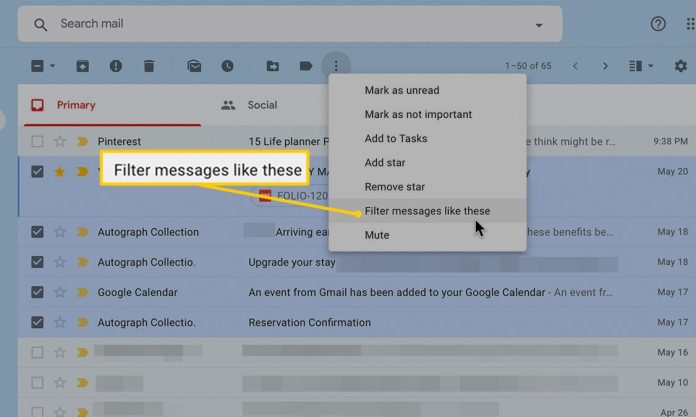Emails are an important way of communication, especially for working professionals. From clients to customers, one could receive several emails each day. It can be a struggle to keep track of your mailbox or to keep it organized. Learning how to move your emails automatically to folders can help keep your emails systematic and prevent your Gmail from overflowing! Below is a detailed guide that will help you understand how to create rules in Gmail to automatically move emails to respective folders:
What are Folders in Gmail?
To understand how to create rules in Gmail and automatically move emails to folders, you must learn how folders work. Folders in Gmail have different names, and their usage is also somewhat different than the traditional Folders we use on our computer system. Folders are known as ‘Labels’ and every email can have multiple labels. When an email is assigned to a specific Label, the email doesn’t actually move to this assigned space; instead becomes accessible in this newly created space too.
This way of sorting emails is not just simple but also gives the users the advantage of being able to access/see all their unread emails in a single place, even after having sorted them according to their specific Labels. This ensures that they don’t miss out on anything important.
How to Create Rules in Gmail to Move Daily Emails to Labels
Now that you understand what Labels are and how emails can be sorted under them for ease of access. Here is how to create rules in Gmail that will essentially instruct Gmail what to do when a new email is received. These rules are also referred to as filters.
To create a new filter or new rule, you first need to click on the small arrow at the right of the Search Bar. A small window with a list of search options will appear on the screen. The search options you input will regulate which emails will be affected by the rule.
Say, for instance, you are creating a rule for an email from domain – createrule.com
- You must fill the From tab with the email that you want to create the rule for and then click on “Create filter with this search”. You will be redirected to a different page with several options where you can select what you want to happen to the email when you receive it. Several options here include Skip the Inbox (Archive It), Mark as Read, Star it, Forward it, Delete it, Always Mark as Important, Never Mark it as Important, Categorize it (with several options) and others. You can select multiple options.
- Since we are trying to learn how to Label the emails – click on ‘Apply the Label’ option and click on the drop-down menu to Choose label; you can pick options from [Imap]/Trash, Unwanted, and New Label.
- Once you have created the label, you can click on ‘Create Filter’. You will be given the option to check “Also apply filter to matching conversations” and the option to label older emails as well.
Finally, you will be prompted with a confirmation message to confirm your action. Now that you know how to create rules in Gmail, your Inbox will be much more organized.
Does Gmail Automatically Delete Emails?
Gmail doesn’t delete any emails automatically, and users enjoy quite a bit of free storage, but one should also remember that the free space offered is shared amongst all the Google services that you have, including Google Drive – which basically is a file storage and synchronization service that lets users store and share files.
To prevent the old emails in your system from taking up so much storage, you should know how to send emails to the trash. To do this, follow the steps below:-
Sign into your Gmail account and then click the small arrow in the Search Bar. A new window will pop up and if you scroll to the bottom, you will find the option to filter your emails by date.
Select the date range from which you wish to remove the emails to the trash and then click Enter.
Next, click on the square icon just below the Search bar to select All
Finally, click on the trash bin icon and delete all emails that you have selected. Users may have to repeat the last step a few times if their Inbox has too many emails.
This is a manual task as Gmail doesn’t offer any automated procedure to delete the old emails in your Inbox.
Experiencing difficulties with your Device, check out our “How To” page on how to resolve some of these issues.













